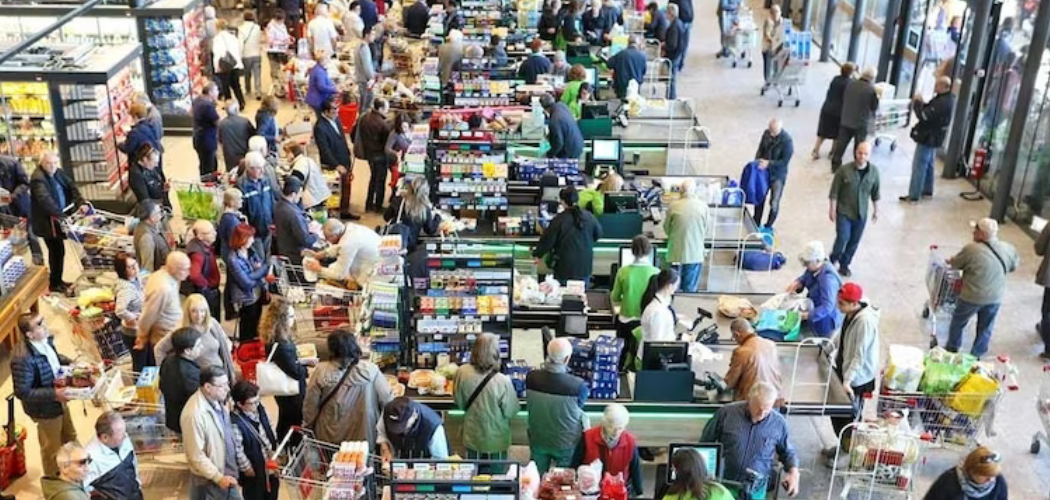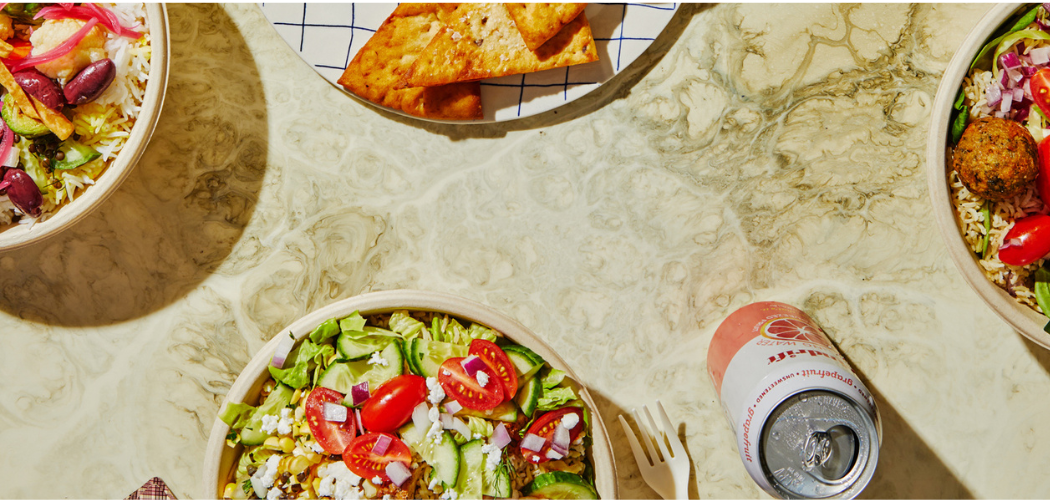Pants aren’t perishable, yet in the ripening world of Kroger’s apparel business, they still won’t be sold online.
As Kroger suits up to enter the higher-margin, highly-competitive apparel industry with its own exclusive designer line, one element is notably missing from the plan: the online availability of its Dip private-label products. Indeed, Kroger — which is investing in many e-commerce services such as its ClickList online order pickup — does not sell any apparel online despite having carried clothing in its stores for some time.
This point is underscored by Kroger’s recent partnership with designer Joe Mimran to launch the Dip line of clothing for adults, kids and babies. The line will be exclusively available to shoppers at all 300 or so Kroger Marketplace and Fred Meyer stores by the fall. But not online.

(PRNEWSFOTO/THE KROGER CO.)
The decision to keep its clothes offline could be rooted in what Kroger knows about the behavior of shoppers, who may be more likely to buy clothing in store, on impulse: “We know customers want to quickly pop in and out of the apparel department, not spend hours browsing,” Robert Clark, Kroger’s senior vice president of merchandising, stated in a press release.
That being said, online shopping behavior, and the prevalence of apparel among other grocery sellers, indicates Kroger may risk missing some near-term sales opportunities. As Joaquín Villalba, CEO and cofounder of the retail technology firm Nextail, noted of the situation: Competition is fierce, not just from Amazon but from Walmart, Target and grocers like Aldi.
Joining the Online Apparel Party
Sales should outpace costs, however, and in this area Kroger’s caution may be rooted in canniness. While nearly 27% of consumers prefer to shop for clothing only online, 43.2% prefer to buy clothing in stores, according to news reports, citing a February survey by Pymnts.com.
Yet those preferences are changing. Online apparel sales consumed 27.4% of the total in 2017, up from 23.5% in 2016 and 20.7% in 2015, according to the Internet Retailer Online Apparel Report, released in late June.
The increase in online clothes spending is likely due to an influx of online-only apparel merchants as well as an expansion into more fashion-forward styles by Amazon and Walmart. Key among these efforts is the adoption, or acquisition, of exclusive private labels.
Walmart, for example, has acquired several retailers, including Moosejaw, Shoebuy.com (now Shoes.com), ModCloth and Bonobos, in a bid to appeal to more affluent online shoppers. Amazon too has launched several private-label apparel lines, as well as the Prime Wardrobe subscription service. Morgan Stanley predicts Amazon will become the top player in the U.S. apparel industry in 2018, surpassing Walmart (Target ranks third).
Why Dipping Into Online Clothing is Different
Selling apparel online presents a specific set of challenges for food retailers, said Nextail’s Villalba, who is also the former head of European operations of Inditex, operator of Zara and other fashion retailers. Key among the challenges is that the grocery shopper is in a different mindset when embarking on a trip compared with an Amazon shopper who starts the trip seeking apparel and then strays to pick up a bottle of olive oil.
Following are Villalba’s thoughts via email on a few common issues with which Kroger might contend.
Bryan Pearson: What are the challenges to selling apparel online for Kroger?
Joaquín Villalba: Besides the obvious challenge of launching a new line of products, Kroger will need to change the mentality of its people, processes and systems. A private apparel label is a different business: You need to deliver new products in shorter cycles and allocate and replenish by attribute, color and size according to the store demographics. To succeed online, it’s critical that Kroger can ship online orders from their stores. This requires having accurate visibility of stock levels across the entire store network.
Pearson: What are the risks of not selling its new clothing online, in light of Amazon’s entry into grocery?
Villalba: Competition is fierce, not just from Amazon but from key players Walmart and Target, which have strong apparel offerings online. Kroger has also been facing stiff competition from more traditional grocery chains, such as European stalwart Aldi, which has been making steady gains in the U.S. By selling apparel online through a partnership with Joe Mimran (who has worked with the grocery chain Loblaw previously), Kroger can not only expand its product set, but also capitalize on the higher margins that apparel typically brings compared to groceries.
Pearson: What would you advise Kroger or any supermarket entering apparel to do?
Villalba: Getting right the basics of buying, allocating and replenishing is crucial for success. As the retail sector continues to implement new ways to attract customers — particularly in light of Amazon’s growing dominance — Kroger will need to have the right systems and technologies in place to ensure planning and forecasting is adequate for the complexity of selling apparel. From keeping the right inventory at SKU level (sizes and colors) to staying (up to date on) on track of the top trends, Kroger will need to react fast to real demand, make data-driven decisions and automate processes where possible to deliver a seamless customer journey in this new apparel offering.
To this last point, Kroger already is planning to simplify its retail inventory. Dip will replace more than a dozen of its private-label clothing brands, the company said.
But Kroger shoppers won’t find Dip or any of these brands online; not in the near-term, anyway. We can order bananas, milk, even fresh fish at Kroger.com, but perhaps not until people start referring to the supermarket chain as Kro-Jay will such offerings be a reality. Kroger is smart to keep its focus on food, and shoppers are likely better off.
Bryan Pearson a Featured Contributor to The Wise Marketer and is the President of LoyaltyOne, where he has been leveraging the knowledge of 120 million customer relationships over 20 years to create relevant communications and enhanced shopper experiences.
This article originally appeared in Forbes. Be sure to follow Bryan on Facebook and Twitter for more on retail, loyalty and the customer experience.




